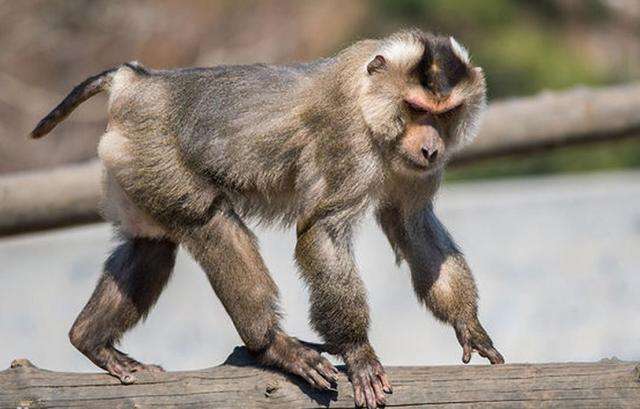Macaca leonina
IUCN
LCBasic Information
Scientific classification
- name:Macaca leonina
- Scientific Name:dolphin-tailed monkey, flat-topped monkey, pig-tailed monkey, pig-tailed monkey
- Outline:Primates
- Family:Primates Cercopithecidae Macaca
Vital signs
- length:44-62cm
- Weight:11-14kg
- lifetime:26year
Feature
Flat hair style, pig-like tail
Distribution and Habitat
It is mainly distributed in Bangladesh, Cambodia, Laos, Malaysia, Myanmar, Thailand and Vietnam in southern Asia, and also in southern China.
It lives in evergreen and semi-evergreen forests in tropical and subtropical hills. It eats fruits, leaves, buds and some insects, small vertebrates and bird eggs.
Appearance
The body is thicker and the tail hair is sparse; the tail is usually drooping and erect when highly excited; the body is generally yellowish brown. Sexual dimorphism is evident. The male has a wide light gray band around his face and shorter vertical hairs, giving him a concave dark patch on top of his head. Males signal threat by displaying a blue flash with raised eyebrows. The supraorbital ridge of the skull is unremarkable, and there is a small cusp on the posterior edge of the last upper molar.
Details
The northern pig-tailed macaque is a species of macaque, slightly smaller than the pig-tailed macaque.

The northern pig-tailed macaque has a nickname called "flat-topped monkey", which comes from the fact that their heads are not only flat but also have a hair whorl. In addition to this appearance feature, the tail of the northern dove-tailed monkey is relatively short and the hair on the tail is relatively sparse. Because this tail is like a pig's tail, the northern dove-tailed monkey is also called the "pig-tailed monkey".
The northern dove-tailed monkey gathers in mostly male groups, often 30 or more individuals, with a territory of several square kilometers. The monkey group feeds in the trees, but basically moves on the ground. The scattered groups keep in touch with low calls and grunts. When the alarm is sounded, they will jump down from the tree and escape on the ground. The northern dove-tailed monkey is a serious and cunning destroyer of farmland, especially for corn fields.
According to research, the northern dove-tailed monkey is also a very smart animal. The northern dove-tailed macaque not only expresses and conveys emotions through actions such as raising eyebrows and squinting eyes, but also communicates through "talking". In different situations, the sounds made by the northern dove-tailed macaque are also different. Not only that, their "talking voices" are also different.
The northern dove-tailed macaque in China was discovered in the southern part of Yunnan in the 1950s. The number of northern dove-tailed macaques, which were not large to begin with, has further decreased in recent years due to the destruction of the ecological environment and excessive hunting by humans. Based on the not-so-optimistic development trend, the northern dove-tailed macaque has also been included in the list of national first-class protected animals. In addition, the northern dove-tailed macaque is one of the "endangered species" in the "China Red Book of Endangered Animals Mammals".
On October 24, 2018, the Forest Public Security Bureau of Menglian County, Pu'er City, Yunnan Province rescued a first-class protected wild animal, a northern pig-tailed macaque cub. The monkey is only 21 cm from head to tail and weighs 1.1 kg. Combined with other characteristics, it is a baby monkey that was born not long ago. It was confirmed that this is a first-class protected wild animal, a northern pig-tailed macaque cub. It was sent to the local wildlife shelter and rescue station for rescue.
There are pig-tailed macaques in six nature reserves in Yunnan, including Xishuangbanna Nature Reserve, Nabanhe Nature Reserve, Lincang Daxueshan Nature Reserve, Nangunhe Nature Reserve, Jingdong Wuliangshan Nature Reserve and Xinping Ailaoshan Nature Reserve. It is estimated that more than 70% of the country's pig-tailed macaque population is protected.
List of wildlife under national key protection: China Key List — Level I
China Red Data Book of Species: China RL — EN
Convention on International Convention on Endangered Species of Wild Fauna and Flora: CITES —Ⅱ
IUCN Red List of Threatened Species: IUCN RL —VU
Protect wildlife and stop eating game.
Maintaining ecological balance is everyone's responsibility!








